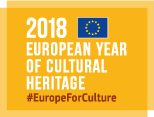Cultural Heritage Interactive Map

Challenge: WHY the innovation has been developed? What problem is addressed and why has not been not solved before?
Showcase in an interactive manner what the European Union (EU) and its partners are doing to protect, promote and raise awareness of cultural heritage in Europe was the challenge of this interactive application. It was developed within the context of the "European Year of Cultural Heritage" as a citizen engagement tool, targeting the general public and the cultural heritage experts. So far, there is no consistent and harmonised repository of EU initiatives supporting the preservation of European Cultural Heritage. This absence and the dispersion of information sources on cultural heritage in Europe motivate the development of this interactive application.
Solution: WHAT the solution is about? HOW it goes beyond the state of the art?
Maps are the visual representation of where events happen. As such, maps and stories complement each other, but until recently, they have existed more as side-by-side products and not as one integrated presentation. The Joint Research Centre of the European Commission developed the cultural heritage interactive map (http://arcg.is/0TjSai) as a map journal combining panels with rich content—text, photos, illustrations, video— and maps that can be queried by the user. One scrolls down the journal discovering new sections around themes relevant to the preservation of cultural heritage in Europe. Besides the needed reflection on the way one want to communicate and the purpose or goal of the story to develop, an innovative work was conducted to create a set of consistent and harmonised European layers depicting cultural heritage.
End-users and examples of uses: WHO will beneficiate/ is beneficiating from the solution? WHERE and HOW the solution has been adopted? How will impact people or end-users? Add as more as possible examples of market and society uptakes
The concept of visually appealing story maps is getting an increasing interest to convey complex spatially based messages to the general public. The JRC chosen solution was based on technologies developed by ESRI Inc., which are widely used in various contexts: https://storymaps.arcgis.com/en/gallery/#s=0. Topics covered range from business economy to history and culture or nature and conservation. Uptakes are Impact can be measured by the traffic generated on the website. In about two months, the Cultural Heritage Interactive Map has attracted about 12000 visits.
Future possibilities: Future market perspectives when the innovation will be fully available or in use
The Cultural Heritage Interactive Map is already available on-line: http://arcg.is/0TjSai First updated to the initial released version have been done in August 2018. There are initial discussions to add citizen interactions with the objective to engage the public in rating cultural heritage sites or flagging the ones that are at risk or deserve special attention.
Media coverage
- European Commission Science Hub: https://ec.europa.eu/jrc/en/news/new-interactive-story-maps-make-europes-cultural-heritage-more-accessible - European Year of Cultural Heritage website: http://europa.eu/cultural-heritage/news/new-story-map-shows-cultural-heritage-everywhere_en - European Commission Press Release Database: http://europa.eu/rapid/press-release_IP-18-4240_en.htm - Europa Nostra Association: http://7mostendangered.eu/map/
References for more information (eg. website, social media)
Contacts:
JEAN DUSART (jean.dusart@ec.europa.eu)
Application sectors:
- Cultural Tangible and intangible landscapes
- Enabling digital technologies for CH
- Audience development and impacts
Objectives:
- Consumers’ awareness and information, trust building
- Knowledge sharing and education
RRI Dimensions:
- Public Engagement
- Science Education
Communities:
- Circular, sustainable and creative cities

